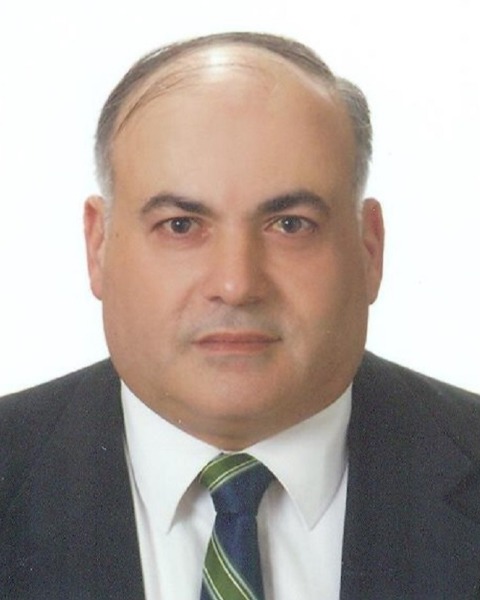Formulation and Delivery - Chemical
(T1430-05-30) Preparation and Characterization of Nanoemulsion Formulation for Andrographolide to Improve its Oral Bioavailability Characteristics
Tuesday, October 22, 2024
2:30 PM - 3:30 PM MT

Bashar M. Al-Taani, PhD
Professor
Zarqa University
Zarqa, Az Zarqa', Jordan
Bashar M. Al-Taani, PhD
Professor
Zarqa University
Zarqa, Az Zarqa', Jordan
Presenting Author(s)
Main Author(s)
Purpose: Andrographolide is a natural compound obtained from Andrographis Paniculata. Andrographolide is an immunomodulator with numerous benefits. It is widely used. It has many potential applications in the prophylaxis and treatment of many diseases such as ulcerative colitis, cancer, diabetes, inflammation, and others. The main drawback of this compound is low oral bioavailability due to low aqueous solubility, metabolism in the GIT, and blood stream. The current research aims to improve its bioavailability through formation of a complex between the drug, Hydroxypropyl beta cyclodextrin (HPbCD) and low molecular weight chitosan followed by incorporation in Nanoemulsion formulation.
Methods: Polyelectrolyte complexes (PECs) between andrographolide, HPbCD and low molecular weight chitosan were prepared. The ratios of complex components were varied. The PECs were characterized by DSC, FTIR, DLS and for entrapment efficiency. PEC with the highest entrapment efficiency was incorporated in surfactant/cosurfactant mixture of Labrasol and Plurol Oleique or Capryol 90 at ratio of 1:1 or 1:4, water and oleic acid to form nanoemulsions. Pseudo ternary phase diagrams were constructed to determine the clear nanoemulsion regions. The prepared nanoemulsions were characterized for refractive index, viscosity, pH, conductivity, particle size, and for stability in SGF and SIF. In vivo comparative bioavailability study of most stable nanoemulsion was conducted in rabbits. Suspension of the drug in water was administered as a control.
Results: PEC DSC and FTIR results confirmed complex formation between the PEC components. DLS results indicated formation of nano-sized complex in the range of 432 – 715 nm with PDI. The complex carries a positive charge in the range of 25-37 mV. PEC2 was selected to be incorporated in the nanoemulsion formula based on 77.5% entrapment efficiency. Characterizations of the prepared nanoemulsions indicated the formation of w/o nanoemulsion with nanosized dispersion (187-322 nm). The drug was most stable in the nanoemulsion containing Labrasol and Plural Oleaque at a ratio of 1:4. This formula were selected for the bioavailability study. It was found that the nanoemulsion was capable of enhancing the biological availability of andrographolide (8.7 times).
Conclusion: Andrographolide complexation with HPbCD and low molecular weight chitosan followed by incorporation in nanoemulsion system improves the bioavailability of the drug substantially
Acknowledgements: the author would like to thank Zarqa University and Jordan University of Science and technology for support this research project.
.jpg)
Particle Size, PDI, Zeta Potential and Entrapment Efficiency of the Prepared Polyelectrolyte Complexes.
.jpg)
Pseudo-Ternary Phase Diagrams of the Prepared Nanoemulsions. The Shaded Areas Reflect the Clear Nanoemulsion regions
.jpg)
The Pharmacokinetics of the Selected Nanoemulsified Formula Versus Suspension after Administration of 50 mg/kg Dose to Albino Rabbits
Methods: Polyelectrolyte complexes (PECs) between andrographolide, HPbCD and low molecular weight chitosan were prepared. The ratios of complex components were varied. The PECs were characterized by DSC, FTIR, DLS and for entrapment efficiency. PEC with the highest entrapment efficiency was incorporated in surfactant/cosurfactant mixture of Labrasol and Plurol Oleique or Capryol 90 at ratio of 1:1 or 1:4, water and oleic acid to form nanoemulsions. Pseudo ternary phase diagrams were constructed to determine the clear nanoemulsion regions. The prepared nanoemulsions were characterized for refractive index, viscosity, pH, conductivity, particle size, and for stability in SGF and SIF. In vivo comparative bioavailability study of most stable nanoemulsion was conducted in rabbits. Suspension of the drug in water was administered as a control.
Results: PEC DSC and FTIR results confirmed complex formation between the PEC components. DLS results indicated formation of nano-sized complex in the range of 432 – 715 nm with PDI. The complex carries a positive charge in the range of 25-37 mV. PEC2 was selected to be incorporated in the nanoemulsion formula based on 77.5% entrapment efficiency. Characterizations of the prepared nanoemulsions indicated the formation of w/o nanoemulsion with nanosized dispersion (187-322 nm). The drug was most stable in the nanoemulsion containing Labrasol and Plural Oleaque at a ratio of 1:4. This formula were selected for the bioavailability study. It was found that the nanoemulsion was capable of enhancing the biological availability of andrographolide (8.7 times).
Conclusion: Andrographolide complexation with HPbCD and low molecular weight chitosan followed by incorporation in nanoemulsion system improves the bioavailability of the drug substantially
Acknowledgements: the author would like to thank Zarqa University and Jordan University of Science and technology for support this research project.
.jpg)
Particle Size, PDI, Zeta Potential and Entrapment Efficiency of the Prepared Polyelectrolyte Complexes.
.jpg)
Pseudo-Ternary Phase Diagrams of the Prepared Nanoemulsions. The Shaded Areas Reflect the Clear Nanoemulsion regions
.jpg)
The Pharmacokinetics of the Selected Nanoemulsified Formula Versus Suspension after Administration of 50 mg/kg Dose to Albino Rabbits
